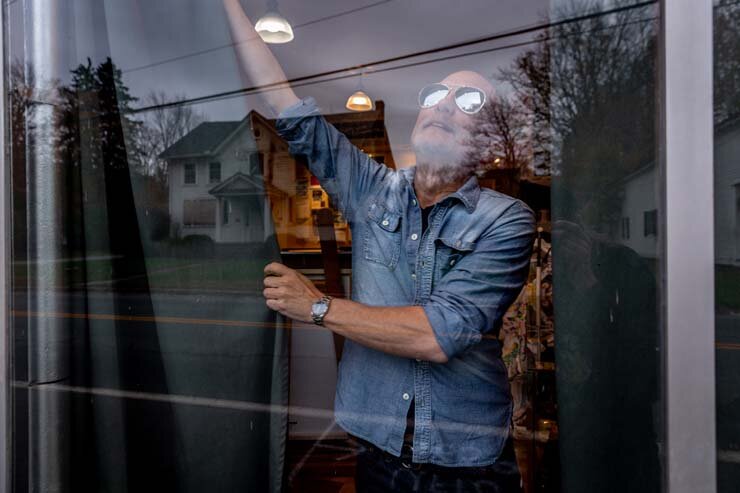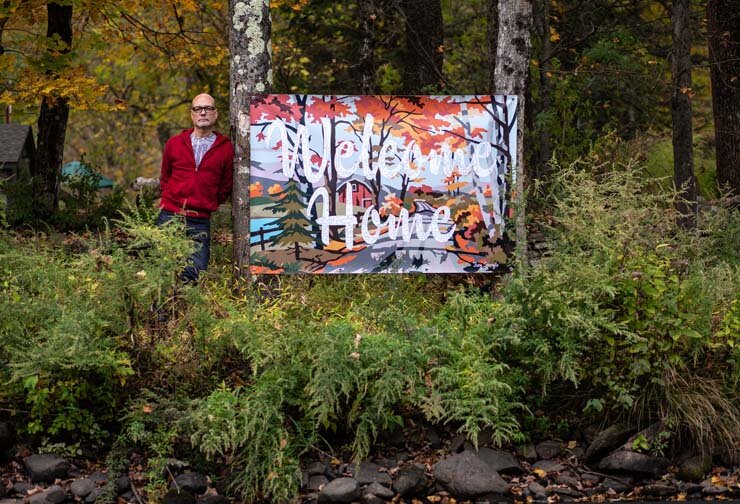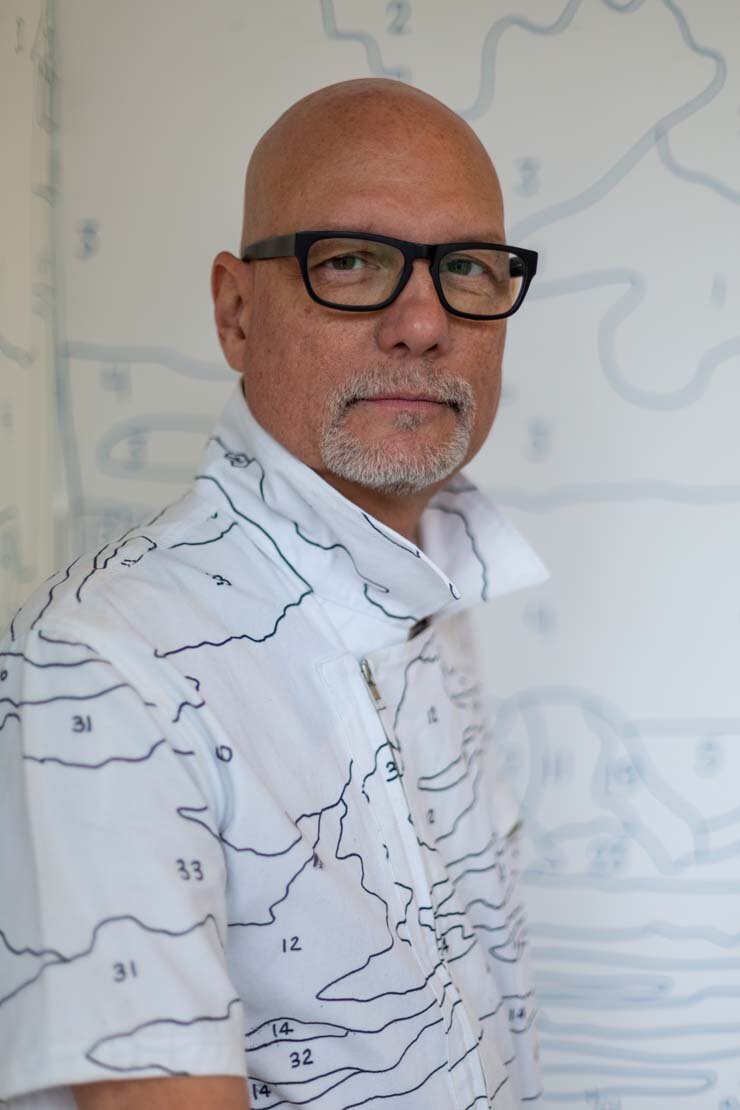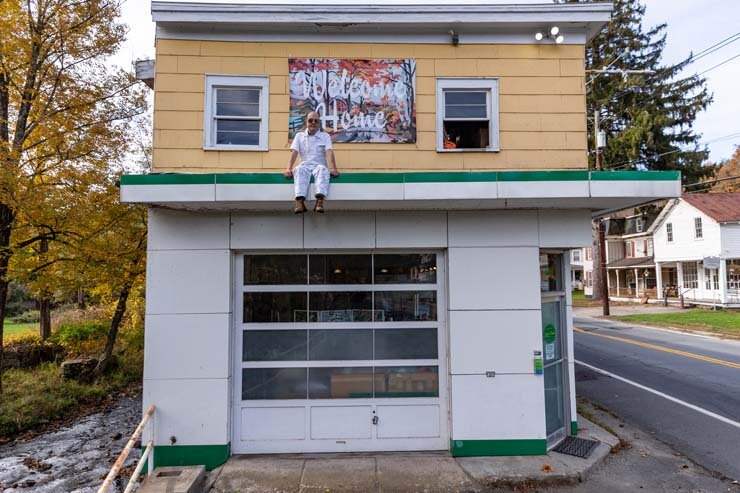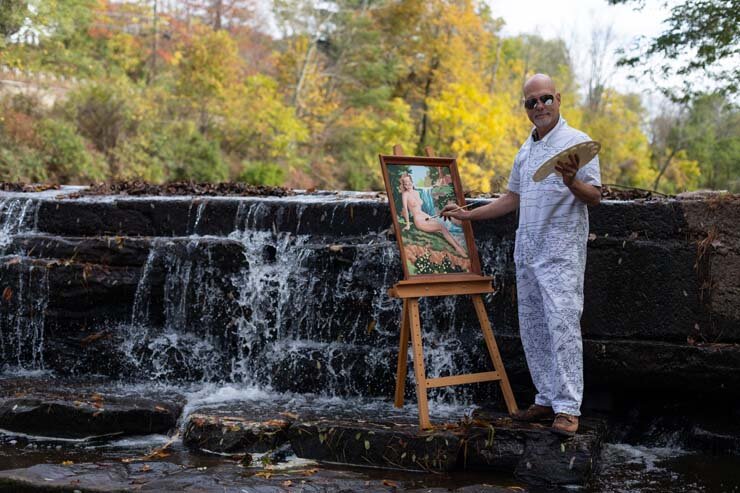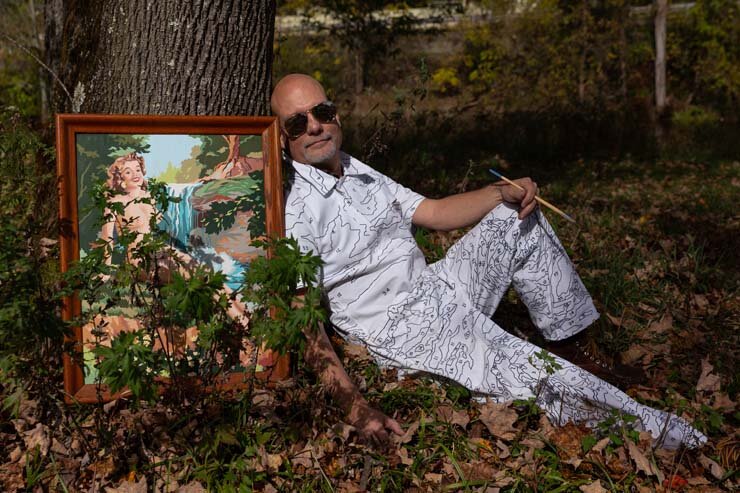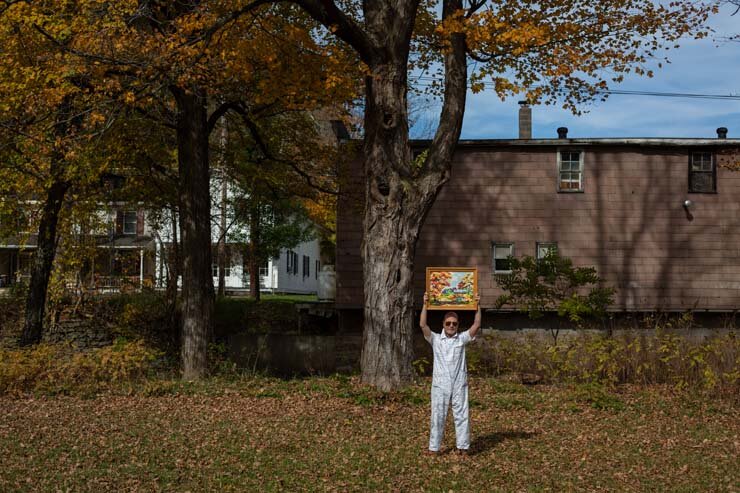CHENEY ORR SHOOTS ME FOR THE EDDIE ADAMS WORKSHOP
The Eddie Adams Workshop is just 10 minutes from my studio in Jeffersonville, NY. What’s that? Well, it’s been around for now some 30+ years. According to their website,
“The Eddie Adams Workshop is the only tuition-free photojournalism seminar of its kind. Applicants at the start of their career submit portfolios for consideration. One hundred participants selected solely on the merit of their pictures team up with top professional photographers and editors for a four-day gathering that includes assignments, portfolio reviews, panel discussions and presentations.”
Eddie Adams the man won the Pulitzer Prize for photography for his iconic shot of a Viet Cong lieutenant being executed at close range on a Saigon street by a south Vietnamese general. Adams also photographed some of the biggest names in the world from Ronald Reagan to Pope John Paul II to Jerry Lewis, Bette Davis and Big Bird.
Adams began his photography career as a high school student in Kensington, Pa., shooting weddings and other events for $20. He passed away in September of 2004.
But his legacy lives on with the Eddie Adams Workshop. This year I was asked to be a subject to be photographed at my painting studio, which as I mentioned, is really close to the workshop.
with Cheney Orr in front of my studio, October 2019
Cheney Orr (isn’t that a GREAT name) got assigned to me (and vice versa). I got lucky. He’s already an accomplished photographer at 29.
He was the recipient of the Mary Ellen Mark Memorial Scholarship, and a 2019 graduate of the Documentary Practices and Visual Journalism program at the International Center of Photography.
At 15 he began studying at ICP. At 25, he traveled to Ukraine where he collected stories and portraits of the country’s youth and his large-scale silver gelatin prints were shown in a solo exhibition at the Ukrainian Institute of America in NYC. His first long-term photo essay documenting his father’s struggle with early-onset Alzheimer’s was published by The New York Times Lens Blog in January of 2018.
So, the guy knows what he’s doing.
Ukranian fighter, Cheney Orr, 2014
In a former life I was an art director and designer for magazines like Vogue, Vanity Fair, Allureand Us Weekly, so I know a bit about photojournalism, telling a story and editing photographs.
My work is based on vintage paint by number paintings, of which I have over 3000. I use them in my work and reconstitute them into large painted canvases. I’ve done collaboration with Anthroplogie, Stella McCartney and others and the jumpsuit I’m wearing in some of the shots was made by me for a collection I created for International Playground x Print All Over Me.
The way the workshop did their assignments, they had 10 teams of ten, each designated by a different color. Cheney’s team, Orange, had the theme of “Costume” and after two days of shooting an editor picked 10 shots to tell the “story”. I didn’t include all of edits, but rather, after Cheney sent me his edit of some 50 pictures, I culled those down to the 10 you see below.
There might have been some vanity involved in my edit, but I was also looking for what I considered to be the best shots, the best portraits. The idea of a story went out the window and to me it was a bit of a flaw in the assignment.
Yes, every picture tells a story, but a photograph, although documenting reality, is always a bit of a lie. And without any real background info on the subject(s), looking at 10 pictures, you are just guessing at the story and probably getting a lot of it wrong without a voiceover or text.
A portrait is always a collaboration with subject and artist. So, although Cheney’s pictures speak for themselves, I have no idea what they are saying here with myself as the subject.
You tell me.
This was Cheney’s favorite and was included in his presentation
“This photograph does not have the best light or composition by my any means, but what draws me to this particular image is the moment. Through this picture I feel like I can really get to know Trey. His personality immediately comes through and his individuality expressed through his surroundings. Honest, energized, playful, real.”






